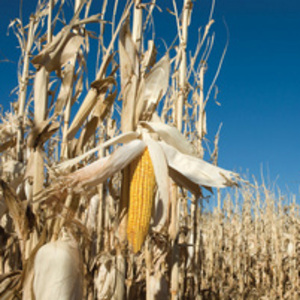Iowa corn production costs to reach $777 per acre in 2013

April 11, 2013
BY Susanne Retka Schill
Corn farmers have seen dramatically higher prices in recent years, increasing the profitability of farming and the prosperity of rural communities. A significant portion of this increase is being offset by higher production costs in what Don Hofstrand, retired Iowa agricultural extension economist, calls an emerging cost-price squeeze.
Writing in the Agricultural Marketing Resource Center’s monthly renewable energy newsletter, Hofstrand outlines the rise in production costs since 2000, with seed and fertilizer costs more than tripling and cash rent more than doubling. The cost of fuel and repairs also increased, although in contrast, herbicide cost dropped slightly during the time period. The total cost of production, based on information from Iowa State University’s Ag Decision Information File, rose from $351 per acre in 2000 to $777 in 2013.
Since yields fluctuate from year to year, the cost per bushel can vary greatly. “Cost per bushel was relatively low in 2004 and 2009 due to corn yields over 180 bushels per acre,” he writes, with 2004 cost per bushel at $2.20 and 2009 at $3.92. “Conversely, cost per bushel was well over $5 per bushel in 2012 due to the drought-reduced yield. A return to more normal yields in 2013 would result in a cost of about $4.50 per bushel.”
Hofstrand’s analysis also looks at the increase in working capital. “The cost of producing 500 acres of corn has risen from about $175,000 in 2000 to almost $390,000 in 2013. Because these costs are generally cash costs, the working capital requirements of a corn farmer have more than doubled during this period. This means that a significant portion of a year’s corn profits are required to fund the increase in working capital needed for the subsequent year’s corn production.”
Advertisement
Advertisement
“Although corn production costs have risen substantially in recent years, the cost per bushel has not exceeded selling price,” he says, adding that cash rental rates will fill in the gap due to competition among farmers for cropland. “Moreover, the current generous revenue insurance program reduces the need for a risk premium in the profit structure of corn production, allowing corn farmers to bid cropland rents even higher. So, the higher corn prices generated by the corn ethanol industry are, or will soon be, fully capitalized into the corn farmer’s cost structure.”
Advertisement
Advertisement
Related Stories
Bangkok Airways Public Company Limited has officially announced the adoption of sustainable aviation fuel (SAF) on its commercial flights, reinforcing Thailand’s green aviation industry. The initiative took effect starting July 1, 2025.
Avalon Energy Group LLC and Sulzer Chemtech have signed a strategic alliance and partnership agreement to scale up the production of SAF. Under the agreement, Avalon has selected BioFlux technology for its portfolio of SAF projects.
Neste and DHL Express have strengthened their collaboration with the supply of 7,400 tons (9.5 million liters) of neat, i.e. unblended, Neste MY Sustainable Aviation Fuel to DHL Express at Singapore Changi Airport starting July 2025.
CoBank’s latest quarterly research report, released July 10, highlights current uncertainty around the implementation of three biofuel policies, RFS RVOs, small refinery exemptions (SREs) and the 45Z clean fuels production tax credit.
The USDA significantly increased its estimate for 2025-’26 soybean oil use in biofuel production in its latest World Agricultural Supply and Demand Estimates report, released July 11. The outlook for soybean production was revised down.
Upcoming Events










